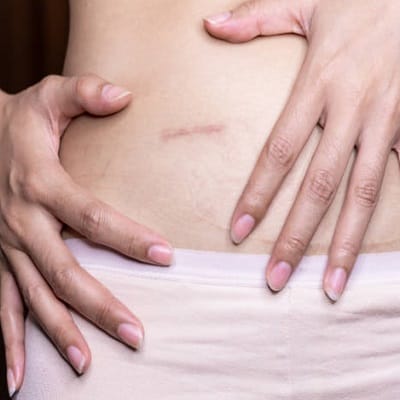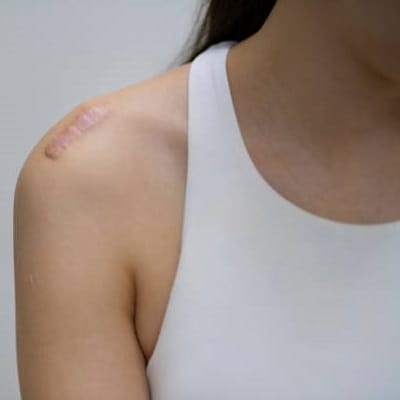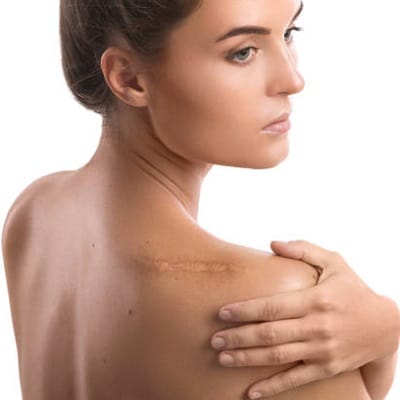
Keloids are hard, sometimes itchy swellings that form after excessive collagen is produced when the skin is healing. Keloids in Islamabad normalize with time but they extend beyond the normal size of the wound. People acquire these marks through injuries, surgeries, piercing of body parts, or minor skin diseases such as acne. So, the question is how to stop keloids from growing.
In this blog, we will share how to prevent a keloid from growing and the different ways to tackle it.
What Causes Keloids?
They are skin distortions resulting from an overproduction of collagen as the body heals from an injury. The scar raises, thickens, and extends beyond the injury’s circumference even after the collagen synthesis has ceased during normal healing.
While anyone can develop a keloid, some factors increase the risk, including:
Genetics: It was revealed that it is more likely that people with a family history of these skin scars.
Injury Type: it can develop in areas of the skin that would have experienced a cut, a puncture, an operation, a burn, an acne, or other skin injury.
How to Treat and Stop a Keloid from Growing:
To prevent abnormal scars from extending, a program of early attention and therapy is necessary. A list of measures below can help you in preventing the formation of keloids and proper care for them if they have already appeared:
Proper Wound Care
One avoids practices that cause the formation of keloids at the surface of the skin to prevent their development. This involves:
Cleaning the Wound: Avoid infections which through contamination increase the instances of keloid formation in the region by keeping the area clean. When cleaning a wound, apply mild soap and water to it, and then cover the area to prevent further contact with the First Aid Attendant.
Moisturizing: Petroleum being an emollient, it should be applied on the cut to prevent formation and quicken the healing process, both of which are facilitated by a constant availability of moisture.
Avoid Irritation: Do not peel off a scab or scratch the wound as doing this is likely to result in excess scar formation.
Use Silicone Gel or Patches
Gels or sheets made of silicone effectively reduce the size and visibility of blisters. One can use silicone gel or patches in the affected area daily to minimize the formation of a scar and prevent it from enlarging.
Compression Therapy
As blisters develop after an injury or surgery, wearing pressure garments or applying compression bandages over the healing area halts the growth.
Corticosteroid Injections
Corticosteroids injected into the abnormal scars are also useful in treating existing keloids. The doctor gives the injections to decrease inflammation and minimize the size of the scar tissue.
Laser Therapy
An effective laser treatment method for managing keloids is laser therapy. It involves the use of laser light to flatten the scar and also to diminish redness. Laser therapy can also help reduce the size and thickness of it. And also causes remodeling of the collagen and so makes it less prominent.
Cryotherapy
Another method of cryotherapy involves gradually freezing the keloid using liquid nitrogen. In cases of small ones, this method achieves the best outcome practically. Cryotherapy is effective in arresting the further development of keloids and has some effectiveness. Although there may be associated temporary discomfort or minor swelling.
Avoid Further Skin Trauma
Before going for a treatment for keloids, always ensure that you do it under necessity as much as possible. For example, avoid obtaining a piercing or getting a tattoo since this will cause the development of new ones. Consult with your doctor about those preventive steps that could help prevent keloid formation. Proper management of wounds after surgery can markedly decrease the formation.
When to consult a doctor?
If you have developing symptoms of a keloid, you should ensure that you get to see a doctor. It is something that aesthetic physicians can prescribe treatments for, to stop its growth. These include shots of steroids, exposure to lasers, or even silicone sheets.
Final Thoughts:
Keloids might be hard to remove but one has to know how to handle them. You should look into the wounds and start treatment early using silicone products. Other medical treatments, such as steroid injections and laser therapies, should be sought to prevent keloids.
If you are worried about keloids and want to get rid then you can visit SKN Cosmetics located in Islamabad, to ensure that none develops in the future.


